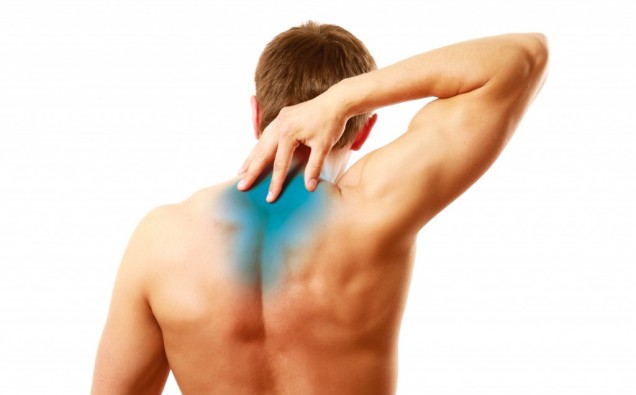On October 16 each year, World Spine Day describes the burden of spinal pain and disability for people, around the world. World Spine Day promotes the importance of spinal health and well-being. The goal is to encourage physical activity, with good posture, responsible lifting and healthy working conditions. Four out five people do have or will have at some point significant back pain. Spine pain affects all people across their life course and is the most noted cause of disability in every country. World Spine Day encourages people to take steps to be kind to their spines.
Free Physician 1: Posture

Christian Campilii, D.P.T.
Mind your posture the entire time. Proper digestion only occurs when we are sitting up straight. Good posture is defined as ears aligned with the shoulders and the “angel wings,” or the shoulder blades, retracted. In proper alignment, spinal stress is diminished. Recent studies show that gastric emptying is significantly delayed in the supine position when compared to a sitting position.
Furthermore, “If you’re slouched over your plate, food cannot travel to the stomach in time for your body to tell your brain it’s getting full; it can take twice as long; thus, causing you to eat twice as much leaving you full and tired.
Check Your Posture: Sitting for prolonged periods can strain your back, and your positioning can make it even worse. To provide yourself with the most relief, make sure your back is aligned against the back of the seat. Keep your shoulders straight and avoid rounding forward. Both feet should be firmly resting on the floor
Free Physician 2: Sleep

OUR PARENTS and ancestors advised us to wake up early, a recommendation that science supports. Since the body is hormonally and metabolically boosted early in the morning, it can do more and think better. Performance is also enhanced since “the rest of the world is sleeping.”
The elementary pattern is that serum concentrations of melatonin begin to increase once the sun sets and serum concentrations decrease to lower serum levels during the day. Melatonin has important effects on sleep- wake cycles, reproduction, and functions presenting circadian rhythm.
The SCN prepares the body for upcoming day with an anticipatory rise in heart rate, glucose, and cortisol. Cortisol, a steroid hormone, or glucocorticoid, produced by the adrenal gland, reaches its lowest level between midnight and 4 am, or 3 to 5 hours after the onset of sleep. Levels peak in the early morning around 8 am, the same time melatonin levels decrease.
Free Physician 3: The Power of Sunlight and Daylight

The circadian rhythm describes the endogenously driven 24-hour cycle in biochemical, physiological and behavioral processes. In other words, our waking and sleeping cycles. The word “circadian” comes from the phrase “circa diem,” which translates to about a day or twenty-four hours. The body has a master clock consisting of approximately 20,000 nerve cells in the hypothalamus portion of the brain that coordinates signals called the suprachiasmatic nucleus (SCN). The retinas, multi-layered sensory tissue that line the back of the eye, contain photosensitive cells that send light information to the SCN. The SCN then relays a message to the pineal gland, a small pinecone-shaped organ located on the midline and attached to the posterior end of the roof of the third ventricle of the brain. The pineal gland secretes melatonin, a structurally simple hormone that communicates information about environmental lighting to various parts of the body.
Free Physician 4: The Power of Thoughts

With a positive thought OR WITH A RANDOM ACT OF KINDNESS: the brain is calm, the body moves into a rest and digest mode, there are fewer “pressors” (chemicals e.g. epinephrine, that raise the blood pressure), the heart feels good, the body relaxes and takes breaths deep into the lungs, the intestines work on digestion more efficiently, libido is increased, muscles loosen and are more mobile, the arteries don’t experience an excessive amount of pressor, creating a normotensive state (having normal blood pressure), there are less inflammatory factors in your blood stream, the pancreas and thyroid function optimally, the immune system peaks, helping to ward off infection, inflammation decreases, increasing body resting and functioning and there is decreased tenderness and discomfort due to spinal problems.
With negative OR PAINFUL THOUGHT: the brain is in turmoil, the body moves into fight or flight mode, there are more pressors, the heart develops an irregular rate and rhythm, stress increases and shallow breaths are taken into the lungs, digestion slows in the intestines and ulcers may develop from stress, reproductive hormones are affected and libido is decreased, muscles tighten and become more tender, the arteries experience excessive pressors, increasing the chance of hypertension, inflammatory factors in the blood stream increase, and irritability increases, the pancreas and thyroid do not function optimally, increasing blood sugar levels and thyroid hormone output to become dysfunctional, the immune system weakens, increasing risk of infection and there is a greater chance of tenderness and discomfort due to spinal problems.
Dr. Ken Hansraj believes that we can radically transform our worlds, one thought at a time. This concept is excerpted from the international bestselling book:
Keys to an Amazing Life: Secrets of the Cervical Spine
available at amazon.com for $6.99 American Dollars
Video: https://youtu.be/QDH8vC4SpuE
Free Physician 5: Pigeon Stretch

Marcia D. Griffin-Hansraj, D.O.
Pigeon is one of my most frequently prescribed stretches because you can directly stretch the sciatic nerve. In so doing, one can stretch the sciatic nerve through the piriformis muscle and relieve sciatica. Get into position with your right knee bent, and your left leg extended straight behind you. Place the right heel in toward your left hip. Make sure your left hip is facing down toward the mat. Stay here with your hands out in front of you, allowing your torso to rest over your right knee. Purposefully and intentionally stretch the right sciatic nerve. Repeat on the other side.
About Dr. Ken Hansraj:
On the forefront of spinal surgery American surgeon Dr. Kenneth K. Hansraj is a spinal and orthopedic surgeon specializing in cervical, thoracic and lumbar procedures for example laminectomies and spinal fusions. Dr. Hansraj believes in tailoring the operation to the patient using the latest spine technologies. Dr. Ken is a spinal surgeon at Nuvance Health based at The Vassar Brothers Medical Center in the Hudson Valley, NY
Dr. Ken is the author of the internationally bestselling book, Keys to an Amazing Life: Secrets of the Cervical Spine, (January, 2013), which he was inspired to write based on this concept. Dr. Hansraj is also the author of Bloodless Spine Surgery: Pictures and Explanations. His goal with each of his books is to bring years of accumulated expert medical knowledge to the public at-large in an easy-to digest format and to help countless individuals with ongoing spinal and health issues.
Dr. Ken Hansraj is TV and media trained and has extensive experience with national outlets such as CNN, HLN, CBS, FOX, NBC, ABC, NPR and has been featured globally. Cision® estimates his current media impressions at 9+ Billions.


















